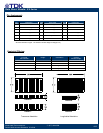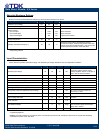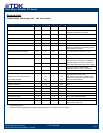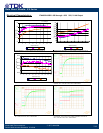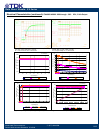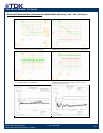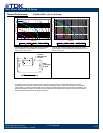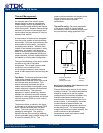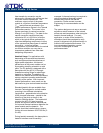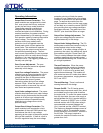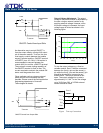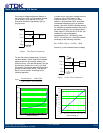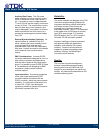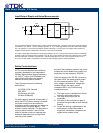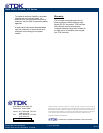
Data Sheet: Maxeta
TM
iFA Series
©2002-2006 TDK Innoveta Inc.
iFA 28V 600W Advance Datasheet 8/3/2006
℡
(
877
)
498-0099
13/19
Operating Information:
Output Over-Current Protection: The
power modules are equipped with current
limit, over-current slow hiccup, and over-
current trip fast hiccup mode protection.
These three protection mechanisms
safeguard the module during output
overload and short circuit conditions. During
overload conditions, the power modules
protect themselves by first entering a current
limit operation mode by lowering the module
output voltage. The relatively long off
duration slow hiccup mode current
protection circuit is triggered once the
filtered peak switch current reaches the
preset value. The modules will operate
normally once the output current returns to
the specified operating range. The fast
over-current trip protection is used to protect
against short circuit or switch shoot-through
conditions. It is a non-latch fast acting
protection circuit. The triggering threshold is
normally set quite high.
Over-Current Adjustment: The over-
current limit set point cannot be adjusted
externally in this design.
Input Over-voltage Protection: The power
modules have an internal protection circuit
to help guard against application of over
voltage at the input of the power module.
The modules shut down to protect
themselves when the input line voltage
exceeds 75Vdc. When the input over-
voltage condition is removed, the unit will
auto restart and operate normally.
Input Under-voltage Lockout: The power
modules also feature an input under voltage
lockout circuitry that ensures that the power
module is off at low input voltage levels.
The power module will operate normally
when the input voltage returns to the
specified range.
Output Over-Voltage Protection: The
power modules have a protection circuit,
independent of the main PWM control loop
that reduces the risk of over voltage
appearing at the output of the power module
during a fault condition. If there is a fault in
the main regulation loop, the over voltage
protection circuitry will latch the power
module off once it detects the over-voltage
condition as specified on the electrical data
page. To remove the module from the
latched condition, either turn the input power
off and back on or reset the remote ON/OFF
pins providing that over-voltage conditions
have been removed. The reset time of the
ON/OFF pins should be 500ms or longer.
Output Over-Voltage Adjustment: The
output over-voltage set point cannot be
adjusted externally in this design.
Output Under-Voltage Warning: The iFA
series power module has internal circuitry to
protect against output under-voltage
conditions. If an under-voltage condition is
present on the output, the module will signal
this condition using the “Power Good” pin.
There is a delay between the under-voltage
condition appearing at the module output
and the module switching the “Power Good”
pin to high impedance.
Thermal Protection: When the power
module exceeds the maximum operating
temperature, which is set between 110°C
and 120°C, it will turn-off to protect itself
against thermal damage. The module will
auto restart as soon as it cools down below
the recovery temperature, ranging between
90°C and 100°C.
Thermal Warning: There is no thermal
warning feature for this design.
Remote On/Off: The iFA series power
modules have two remote on/off pins, which
are isolated from the input side as well as
the output side. To control the power module
from the input side, the user must supply a
switch between the Vin(-) terminal and the –
ON/OFF terminal of ON/OFF pins. A 30KΩ
external resistor with 0.5W power rating is
recommended to connect between the
Vin(+) terminal and the +ON/OFF terminal.
The maximum allowable leakage current of
the switch is 50uA. The maximum current
sinking capability of the ON/OFF terminal is
5mA or less. The current required to
maintain the module ON status must be
greater than 1mA.



